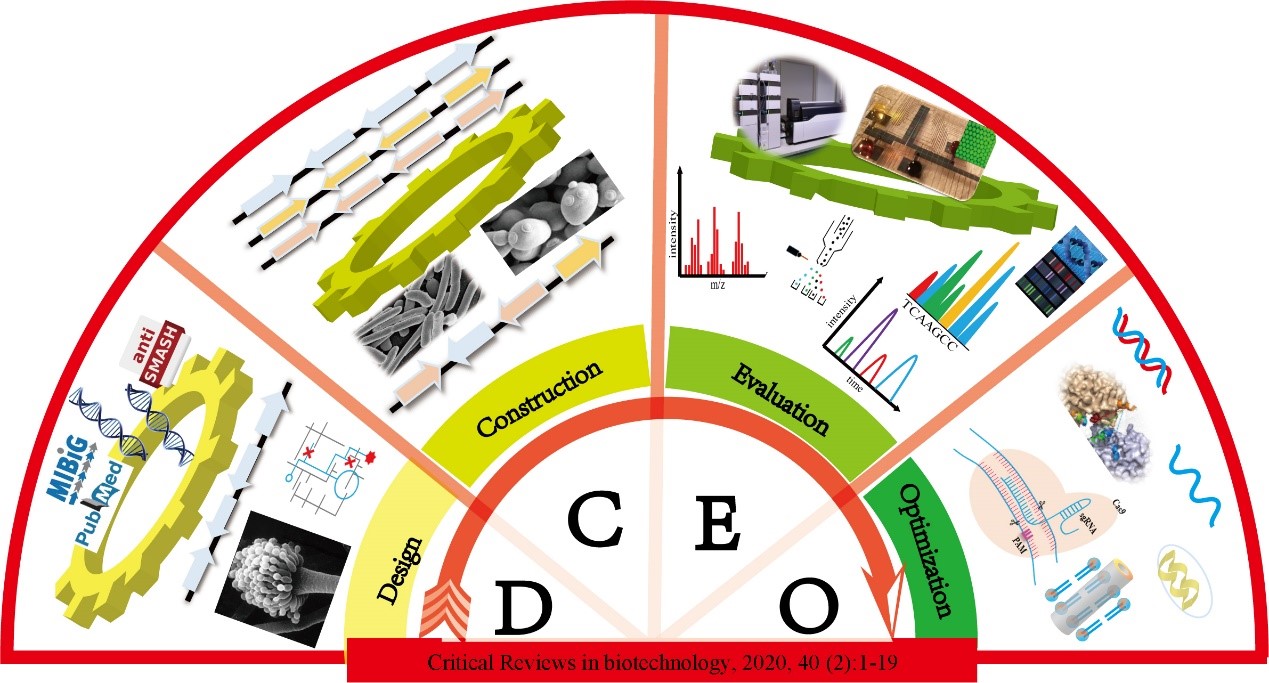Advanced Strategy for Metabolite Exploration in Filamentous Fungi
Filamentous fungi contain 50-90 biosynthesis gene clusters (BGCs), encoding polyketides, non-ribosomal peptides, alkaloids, and isoprenoids. However, numerous pathways for metabolite biosynthesis are cryptic in laboratory conditions.
Furthermore, some inducible environments can slightly activate these BGCs pathways. Complex cellular metabolisms also limit metabolite titers. Deficiency of detection technology further aggravates the processes that confirm these low titer metabolites. Deficiency of detection technology further aggravate processes that confirm these low titer metabolites.
Design-construction-evaluation-optimization (DCEO) tool provides theoretical and practical principles to identify potential pathways, modify endogenous pathways, integrate exogenous pathways, and exploit novel pathways for their diverse metabolites and desirable productivities.
The systematic review, led by DENG Huaxiang from the Shenzhen Institutes of Advanced Technology (SIAT) of the Chinese Academy of Sciences and The Jiangnan University, could help scientists to balance the cellular metabolisms, facilitate the genetic engineering and exploit the scalable metabolites in filamentous fungi.
Combining with the computer aid, DCEO tool has evolved to facilitate diverse metabolite orchestrations in filamentous fungi. Similar to those of E. coli and yeast, the DCEO approach of filamentous fungi comprises the computer aid tools and high throughput supporting tools. However, no standardization rule exists for filamentous fungal DCEO.
Dr. DENG Huaxiang summarized the principles, strategies and notes to discover high-value metabolites of filamentous fungi by DCEO.
The DCEO approach comprise four sections. The design process offers tactics to excavate or associate the untapped and known pathways, which generate targeted metabolites or derivatives.
The construction stage provides various approaches to assemble heterologous pathways in the tractable filamentous fungi. The evaluation process is adopted to determine metabolic bottlenecks by exhaustive measurements. Different strategies in the optimization process can refactor pathways for the target metabolites after machine learning. The DCEO tool provides the theoretical and practical principles to mine potential pathways, modify endogenous pathways, integrate exogenous pathways, and exploit novel pathways for the diverse metabolites and desirable productivities in filamentous fungi.
The study was published in Critical Reviews in Biotechnology.

The design-construction-evaluation-optimization approach for discovering the diverse metabolites and improving desirable productivities in filamentous fungi.(Image by Dr.DENG)
Media Contact:
ZHANG Xiaomin
Email: xm.zhang@siat.ac.cn